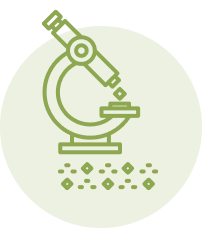Soil testing is a valuable key to understanding soil factors that can limit or adversely affect lawns and gardens. Whether you are a new homeowner or expert gardener, having your soil tested is a key step for understanding how to take care of it.
Soil tests can be conducted by your local Cooperative Extension Service office. The results provide a plethora of information on soil characteristics. It is important to understand how to interpret soil test results. It’s helpful to re-test soil occasionally, as soils factors like pH can change over time.
Soil pH
Soil pH is the measure of the acidity of your soil. Soil pH affects the availability of nutrients in soil, because improper pH “locks up” nutrients, making them unavailable for plant uptake. This is common in the Western United States, where soil pH is too high.
If your pH is between 6.5 and 7.2, your soil is considered neutral, which is ideal for most types of plants (search for your specific plants to see if they require a different pH).
Dealing With High Soil pH
For soils with pH above 7.2, you can lower pH with elemental sulfur. Earth Science Fast Acting Sulfur® is ideal for rapidly lowering soil pH.
Dealing With Low Soil pH
If your soil pH is too low, you will need to add Fast Acting Lime. Fast Acting Lime will raise your soil pH, to unlock nutrients by bringing it back to the neutral zone.
Soil Organic Matter
Organic matter is a key component of soils. It serves as a reservoir for nutrients for plants and beneficial soil microbes and helps to hold nutrients in the soil. Organic matter helps to improve soil structure so soils can retain oxygen and water without becoming water saturated. Soils with organic matter content below 2% can benefit from the addition of organic matter. An excellent way to build organic matter levels in gardens is by using organic mulch. Over time, the action of soil microbes and earthworms breaks down the mulch and incorporates it into the soil. In lawns, leaving clippings on lawns and using shredded leaves as a fall and winter mulch will help build soil organic matter over time.
Soil Nutrients
A number of nutrients are essential for vigorous and healthy plant growth. Soil test reports generally classify specific nutrient levels in soils, ranging from very low or low to moderate, to high or very high. When fertilizing, focus on adding nutrients in the lower ranges, while avoiding adding nutrients that are already present in high levels.
Soil testing reports often make fertilizer recommendations based on the soil test results.
These guidelines should help you interpret a soil analysis report. For more information on understanding a soil test report, contact us today!



